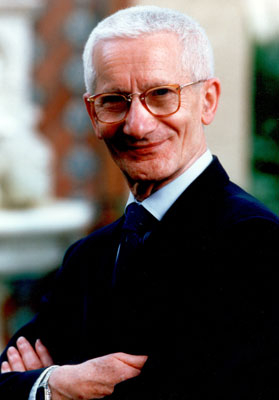ICCROM has learned with great sadness of the death of Walter Persegati at the age of 96 years.
Very active in his youth in the Young Catholic movement, Persegati organized among other things the reception of European refugees in the United States during the 1950s. He returned to Italy and collaborated with Caritas International, and was also representative of the Holy See to the FAO, where he distinguished himself for his qualities as an organizer. In 1972 he was appointed Secretary-General and Treasurer of the Vatican Museums with the immediate and main task of reorganizing the establishment in order to prepare for the millions of pilgrims expected for the Holy Year of 1975. He remained in this post until his retirement in 1998.
In three years he created an exemplary museum, a stand-out amidst all the major European museums, where public reception goes hand in hand with security, where the training of personnel at all levels is undertaken together with the conservation of the artworks.
From 1975 to 1991 Persegati received the participants on the ICCROM Course on Prevention in Museums, accompanying them on study tours of the Museum. Those who had the good fortune to hear him still remember his vision and pragmatism which he expressed with a very British humor. He explained the original system developed to provide visitors with five possible routes depending on their available time, from one to six hours. He called this last “the kamikaze route” which ensured that visitors passed before 18 kilometers of walls with exposed artworks.
In 1985 a cleaning test on one of the Sibyls painted by Michelangelo on the lower section of the Sistine Chapel revealed the original dazzling colours. From this date, Persegati made every effort to ensure that this cleaning was extended to the paintings of the whole Chapel, including the ceiling. As any such project requires funds, he sought “neutral”, long-term financing. He found it in Japan with the leaders of the Nippon TV network who, thanks to their technical means, ensured the exceptional documentation of all the intervention made by the team of Italian museum restorers, under the direction of an International Committee in which ICCROM participated.
When asked whether he’d had any moments of doubt while faced with the inevitable controversies provoked by this exceptional intervention, Persegati replied: “This does not worry me, because the intervention highlights the genius of Michelangelo, and as man is the creation of God, I have no right to hide a proof of the genius of God.”
All Persegati’s actions were inspired by a deep respect for the public and a desire that visitors should be enriched by their visits to the Museum. Those familiar with his involvement in reorganizing the Vatican Museums and in the Sistine Chapel project found it hard to believe that his background was not art, but business administration. He was a person of many interests who always showed exceptional organizational skills.
The world of conservation has lost a passionate and dedicated professional and a great friend of ICCROM. We offer condolences to his family, friends and professional colleagues worldwide.
Gaël de Guichen

